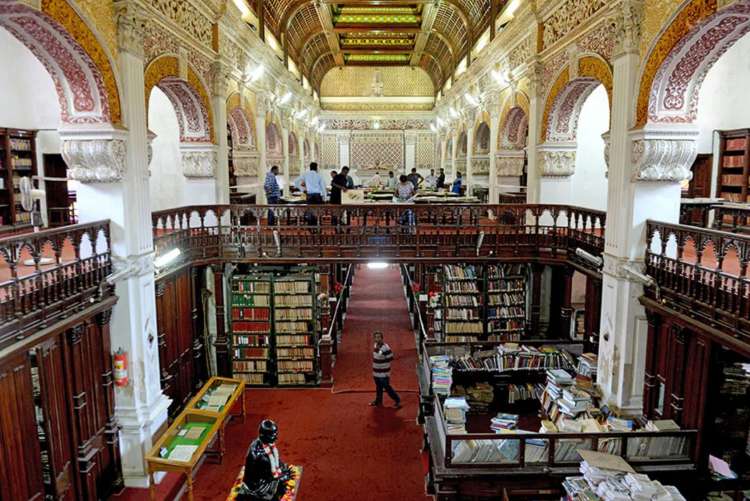
Research publications boom in India: Indian higher education has significantly transformed in recent years, with academic institutions increasingly emphasising research output, global visibility and competitive rankings. Central to this is the surge in publication activity across public and private universities. From 26,664 in 2001, the number of research publications shot up to 99,411 in 2011 and 3,70,595 in 2024.
The pressure to publish in indexed journals, particularly those listed in Scopus and the Web of Science (WoS), has fostered a culture of productivity reckoned in numerical terms that is indifferent to critical inquiry, theoretical originality, and ethical standards.
A 2024 study warned about widespread year-over-year inflation of journal impact factors coinciding with this exponential growth in publications, which risks the quality of scientific knowledge production in the long run.
Between 2020 and 2025, 335 questionable journals were removed by Scopus to preserve research integrity. New Scopus indexed sources were also added: 143 from Feb 2023 to June 2025, including 57 in June alone. Indian universities continue to prioritise publication counts with serious implications for the credibility and future of research across various disciplines in India.
READ I English medium boom risks education and identity
Top in numbers
Between January 2020 and May 2025, India contributed 16,18,824 papers to Scopus-indexed journals—the highest in the world, ahead of academic powerhouses such as the USA and UK and emerging superpower China. This surge reflects India’s expanding research base, increased institutional pressure to publish, and growth of research publications.

India ranks third in total research output but only around 19th in H-index, which measures the productivity and impact of research publications. The H-index for Indian publications was 925 in 2024: 71.21 percent lower than US publications whose H-index is 3213.
This highlights the need to shift policy and academic focus towards enhancing research quality, citation impact, and international collaboration. Countries like Australia (H-index: 1475) and the Netherlands (H-index:1471), which published 2.1 million and 1.4 million documents respectively, have far higher H-index figures than India which published 3.3 million documents. This indicates better average impact per publication. However, only a negligible number of these Indian-origin papers were among the most cited in their fields. An analysis of retracted Indian publications found their numbers per year had increased mainly due to errors, plagiarism and ethical concerns such as duplicate publication.
The situation also extends to entire journals.
Research publications: Quantity over quality
Currently, only 12 Indian journals are categorised as Quartile 1 (Q1) —among the top 25 percent in their category—in the Scimago database. This highlights Indian institutions’ inability to sustain journals that meet international standards of editorial rigour, peer review, and citation impact. Further, the data indicates that most journals originating in India occupy Quartile 3 (Q3) and Quartile 4 (Q4) positions, the bottom half in their categories.
Such journals tend to have limited visibility, weak influence, and insufficient scholarly engagement.
The increase in the number of research publications should translate into knowledge production and its dissemination. That does not seem to be happening.
Instead, the prevailing academic environment in India has turned research publication into a bureaucratic hurdle rather than an intellectual pursuit. Faculty promotions, salary increments, and institutional funding are frequently tied to journal publications indexed in Scopus or WoS. While such metrics are intended to ensure accountability and global competitiveness, in practice, they are incentivising a utilitarian approach.
Article publication has become about fulfilling quantifiable benchmarks, with little regard for the depth, relevance, critical thinking, or originality of the work produced.
A 2024 study found that the pressure to publish has led many scholars to engage in plagiarism, data fabrication, and salami-slicing, the slicing of research for one paper into multiple publications to inflate numbers.
Plagiarism, both of external sources and self-plagiarism—reusing one’s own published work without attribution to make it appear new—is increasingly normalised under the pretext of expediency. Data fabrication and manipulation of research findings are unethical practices that severely undermine research integrity. Similarly, salami slicing further erodes scholarly coherence and intellectual honesty.
Such unhealthy practices may increase the overall volume of academic publications from India, but their impact remains low.
Dependence on West
The poor representation of Indian journals in the top quartile suggests Indian scholars are heavily reliant on foreign publications. However, a 2016 study found these journals often operate with high rejection rates, limited acceptance of region-specific empirical studies, and editorial frameworks that may not fully accommodate perspectives from the Global South.
Desk rejections particularly common for submissions from India. While editorial selectivity is a necessary component of journal curation, evidence suggests such practices disproportionately affect scholars from developing countries, especially when their work challenges dominant paradigms or employs non-Western theoretical frameworks.
India needs a robust indigenous research publications ecosystem that fosters scholarly aptitude. However, many Indian journals suffer from inadequate funding and weak editorial governance. Peer review processes are often inconsistent and compromised by personal networks. Editorial decisions are often driven by considerations other than scholarly merit.
Compounding the problem is the proliferation of predatory journals in India, which often publish research work for a fee with little or no peer review. In a system where the number of publications is prioritised over their legitimacy or influence, predatory outlets offer a quick and accessible route to meeting performance criteria.
The University Grants Commission’s (UGC) CARE list had often identified predatory or cloned research publications. This significantly aided scholars but the UGC stopped updating the CARE list in October 2024 and subsequently announced that it would not update the list any more.
Need for holistic approach
Moreover, Indian academics largely use books by foreign authors as core reference material in their syllabi. This presents a paradox: Indian scholars publish extensively, yet this knowledge is not adequately acknowledged within academic discourse, especially in higher education.
Additionally, Indian students are increasingly migrating abroad for higher education to countries such as the USA, UK and Canada, though these countries’ academic contributions are relatively less in terms of publication volume. This further underlines the complex dynamics of perceived quality and academic capital in global academia.
Indian academia must fundamentally rethink how research is evaluated, supported, and disseminated. Universities and regulatory bodies must avoid excessive reliance on publication numbers as the primary metric of academic performance.
A holistic approach that considers research impact, methodological innovation, and community engagement must be applied. Faculty evaluations should include unbiased qualitative assessments of scholarly contributions, and ethical research practices embedded at every stage of the academic career, from doctoral training to tenure review.
Reforms in faculty assessment should include consideration of research relevance, methodological innovation, and impact on policy and society. Focus must be on mandatory ethics training, strict anti-plagiarism mechanisms, fostering indigenous and regional scholarship, and encouraging research in regional languages focused on local contexts and indigenous frameworks.
The country must invest in its own research publications ecosystem, including editorial training, peer-review reform, funding for journal sustainability, and collaborations with global publishing networks. Developing rigorous peer review standards can enable credible academic contributions towards the development of indigenous knowledge. These initiatives will help Indian academia reclaim the university as a place of critical thought, ethical engagement, and meaningful and inclusive knowledge production.
Dr Aneesh MR and Dr Viji B are Assistant Professors at Department of Economics, CHRIST (Deemed to be University), Bannerghatta Road Campus, Bangalore. This post appeared first on 360.
